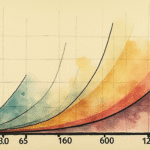Background on Key Figures and Context
Volodymyr Zelenskyy, the President of Ukraine, has intensified his country’s response to Russian drone attacks on Ukrainian power grids, promising retaliation and authorizing more strikes within Russia. This escalation comes after three-and-a-half years of ongoing war, with both Russia and Ukraine increasing aerial attacks despite peace-seeking efforts.
Meanwhile, global oil market concerns persist as Russian crude shipments from their ports have dropped to a four-week low of 2.72 million barrels per day (bpd), according to tracking data cited by industry analysts from ANZ.
Additionally, the upcoming U.S. labor market report will provide insights into the economy’s health and test investor confidence in near-future interest rate cuts, which has bolstered appetite for riskier assets like commodities.
Market Factors Influencing Oil Prices
On Monday, Brent crude oil futures rose by 1% due to growing worries about potential supply disruptions from intensified aerial attacks in Russia and Ukraine. The weakening of the U.S. dollar also supported oil prices.
Due to the U.S. Labor Day holiday, there was no WTI futures settlement, and trading volumes for both Brent and WTI were moderated because of the reduced market activity.
Geopolitical Developments
Investors are closely watching a regional summit in Beijing, where Chinese President Xi Jinping, Russian President Vladimir Putin, and Indian Prime Minister Narendra Modi are in attendance.
China’s manufacturing activity expanded in August to its fastest pace in five months, according to a private sector survey published on Monday. This growth supported oil and copper prices, as noted by SEB’s commodity analyst Bjarne Schieldrop in a client note.
OPEC+ Production and Reserves
The upcoming OPEC+ meeting on September 7 is a key focus for investors. The question remains whether oil-producing members of OPEC+ will continue to raise production targets beyond September, as a decision is expected in the coming days.
As summer ends, oil reserves are projected to rise in the last quarter of 2023 and the first quarter of 2024, according to HSBC analysts. An excess of 1.6 million barrels per day is anticipated in the fourth quarter.
The combined effect of OPEC+ supply increases and rising reserves could keep downward pressure on oil prices, following August’s first monthly declines in four months for both Brent and WTI, with losses of 6% or more.
PVM analyst John Evans stated in a note, citing OPEC+ supply increases, that “oil professionals will continue to temper their enthusiasm.”
Key Questions and Answers
- What caused the recent rise in oil prices? The increase is primarily due to concerns over potential supply disruptions from intensified aerial attacks in Russia and Ukraine, as well as the weakening of the U.S. dollar.
- Who are the key figures mentioned in this article? The key figures include Ukrainian President Volodymyr Zelenskyy, Chinese President Xi Jinping, Russian President Vladimir Putin, and Indian Prime Minister Narendra Modi.
- What is the significance of the upcoming OPEC+ meeting? The meeting on September 7 will determine if oil-producing members of OPEC+ will continue to raise production targets beyond September.
- How do geopolitical developments impact oil prices? Geopolitical tensions, such as those between Russia and Ukraine, can create uncertainty in the oil market, leading to price volatility.
- What role do economic indicators play in influencing oil prices? Economic reports, such as the upcoming U.S. labor market report, can affect investor confidence and, consequently, commodity prices like oil.






